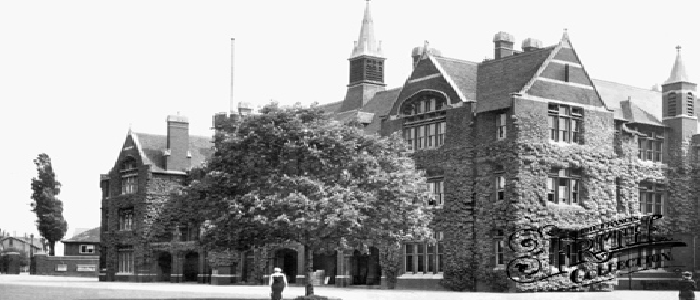As
published last week, open day at the school inspired a study by year 12 students to see whether the perceived status or value of cars influenced their location. When collecting the data, it had appeared that smarter cars located closer to the most visible and walked past locations on the school site. The location of the cars was mapped out in the field then transferred to a map in the classroom. The map includes a key where the colour denotes the car type. Note that the tabular form of the key allows an easy analysis at first glance of car types and their proximity to what was deemed to be the highest exposure site: immediately next to the South porch, the main entrance for the day.
Click on the images below to see them clearly and on a larger scale.
Fig 1: Map showing the locations of car types and the prime location (marked by an X)
The students have also graphed the number of each car located within 50 metre intervals of the prime location:
Fig 2: Bar graph of 50m wide radii of location and brands within them
So... do the cars that are better locate closer to important locations, and do those that are worse hid further away?
From the map, the closest cars to the prime location are Vauxhall, Audi and Lexus. The degree to which this can support any theory depends on which model. Certainly those spotted on the day appeared smarter. Within 50m there are also pockets of BMWs and VWs. So, though there are smarter cars close to the most visible location, there is no dominance by any particular brand.
The key on the map gives some more revealing information however, when the proportion of each car in each circular band is given. Audi, BMW, Lexus, Vauxhall and Mercedis all show a tendency to locate closer to the most visible location, whilst Ford, VW and Range Rover are skewed the other way.
The graph, displays some interesting trends too. The most notable bars are those for the Audis within 50m and the Fords between 150 and 200m. There are brands which havn't located within the 150m-200m category at all: High range BMWs, Jaguar and Lexus, whilst some have not located within 50 metres: Honda and medium range BMWs.
Some data needs no analysis since it is likely that Jaguar and Porsche drivers will locate wherever they like!
Overall, the data probably supports the initial theory that drivers of nicer cars locate closer to the most visible locations, although it would appear that the visual study at first may have carried an emphasis on those cars which were more striking since the spread of cars is greater than was first anticipated. being able to investigate and quantify Geographical observations has been a very useful exercise, as has using different forms of presentation to highlight certain data more clearly. We are on the lookout for more small scale investigations around us...





















